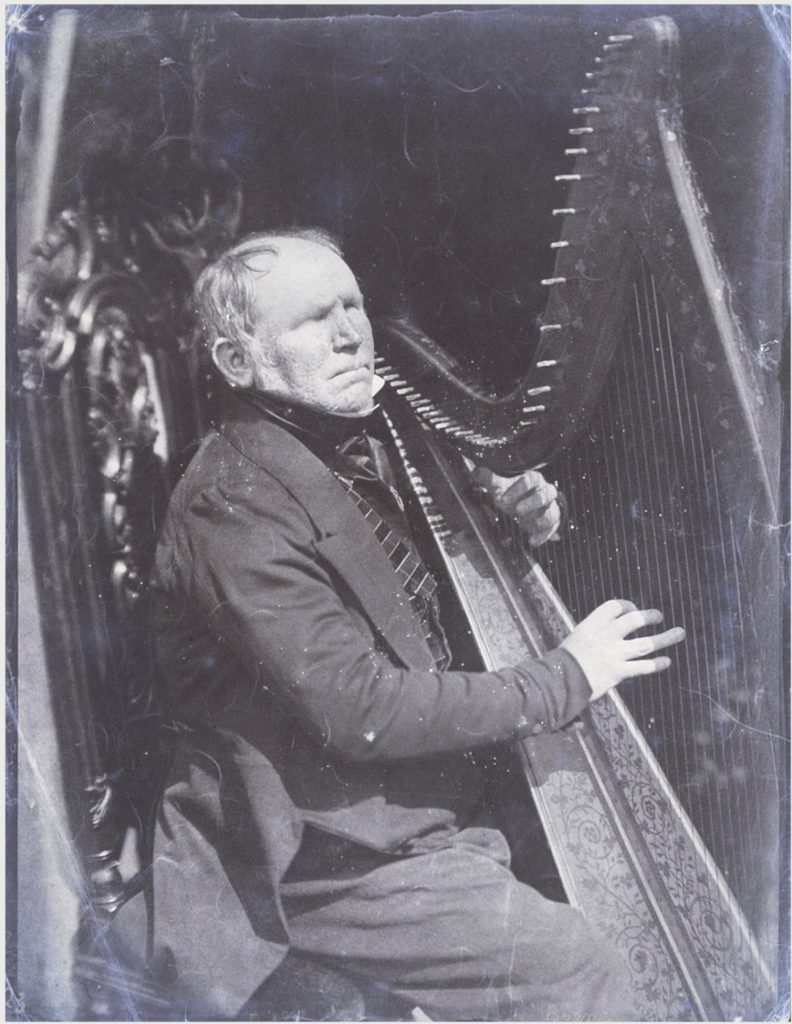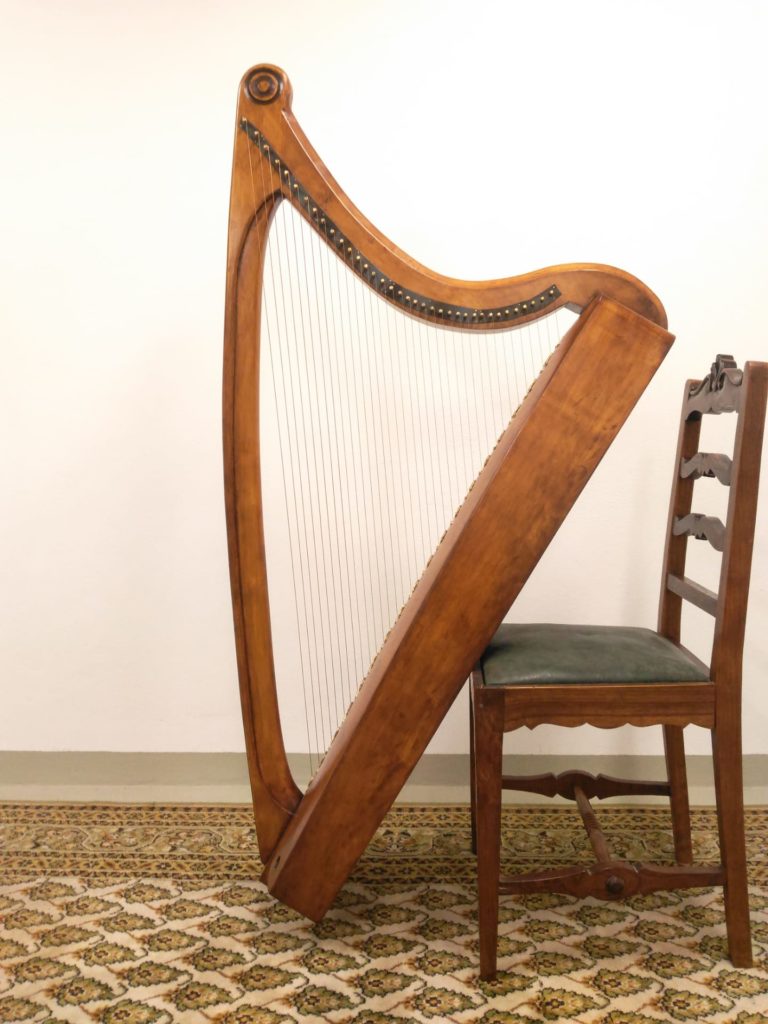For centuries, the distinctive thing about an Irish harp has been its metal wire strings. The traditional wire-strung Irish harp is played with the left hand in the treble, and the right hand in the bass. The traditional Irish fingering techniques and the distinctive method and system of playing the tunes were passed down through generations of oral tradition into the 20th century.

The last of the tradition-bearers died in the decade between 1900 and 1910, and they had not been able to teach the next generation of young people to play on the traditional wire-strung Irish harp; they had not managed to keep their tradition alive. There are lots of reasons for this loss, including betrayal by the very people who were claiming to save the tradition. Even while there were still tradition-bearers alive, top scholars and musicians were announcing that the tradition was already dead and lost, and pedal-harp teachers were coming to Ireland to spread their classical re-interpretation of Irish harp music. Traditional Irish harpers playing wire-strung harps in the inherited tradition were overlooked, neglected and marginalised; at the same time, classical harpists playing pedal harps were platformed in their place. From 1897, regular classes were started in Dublin on the new small gut-strung lever harp, taught by a classical pedal harpist, starting a new tradition of harping in Ireland. This new classically-rooted lever harp tradition has since become the dominant type of harping in Ireland.

But we have a huge amount of information about the inherited tradition of playing the wire-strung Irish harp; some of the old harpers’ instruments are preserved in museums and private collections; we have lists of playing techniques, and fragmentary settings of tunes played on the traditional wire-strung Irish harp. I started searching for, cataloguing and organising this information over 20 years ago, and I realised back then that there was an almost overwhelming amount of information about the traditional harp music, almost too much; I realised that a genuine revival and renewal of the lost tradition should be possible.
All through the 20th century, people have lamented the loss of the inherited tradition of playing the wire-strung Irish harp, and many people have tried to get it up and running again. Ann Heymann began in the 1970s, and was my mentor and adviser from the beginning of my work in the late 1990s. Perhaps most importantly, she recognised the necessity of not using a classical music background or approach, but she tried to understand the wire-strung Irish harp as a traditional music, fitting into Irish traditional music norms. I have focussed on studying and reconstructing the instruments to discover and define the traditional norms, most recently by drawing up plans and designs for the types of traditional wire-strung Irish harps used by the last of the tradition-bearers, and having new copies made by harp-makers. Sylvia Crawford has been intensely working to understand and interpret the lists of fingering techniques and making a structural analysis of the traditional music, to understand the harmony and resonance of these traditional instruments, and to re-build the method of playing of the traditional harpers, leading to an ongoing renewal of the tradition amongst her students and others (like me) who are following her lead.

